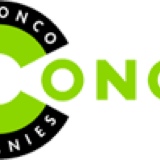Information
-
Audit Title
-
Client / Site
-
Conducted on
-
Prepared by
-
Location
-
Personnel
1. Fall protection. WAC 296-155
-
1.1. Fall risks of 6' or more? (including voids, pits, and trenches)
-
1.2. Proper handrail protection in place with top rail 42 +\- 3" , toe boards and mid rails?
-
1.3. Leading edge protection in place with fixed barrier, tape or stations with proper signage?
2. Tools and Equipment
-
2.1. Unsafe or damaged tools / equipment? (including missing or damaged guards)
-
2.2. Incorrect Tools / equipment for job? (e.g. grinding discs for cutting)
-
2.3. Unsafe or incompatible attachments used with tools /equipment?
-
2.4. Unlicensed operators?
-
2.5. Lack of safe work instructions?
-
2.6. Lack of training in safe operation, clean-up and maintenance?
-
2.7. Lack of LOTO procedures for cleaning, servicing and maintenance?
-
2.8. Lack of inspection regime?
-
1.4 wood rails not spaced more than 8' on center with duplex nails flush..<br>
3. Scaffolds
-
3.1. Certified persons erecting scaffold above 6', green tagged when ready to work from?
-
3.2. Unsafe or incomplete scaffold, red tagged ?
-
3.3. Lack of inspection protocol for scaffold?
-
3.4. Incompatible scaffold components?
-
3.5. Safe Work Load (SWL) exceeded? (tools, stored materials, number of persons)
4. Lifting Equipment
-
4.1. Unsafe or damaged rigging?
-
4.2. Loads lifted over persons, close proximity to obstacles incl. overhead power lines?
-
4.3. Certified or licensed operators?
-
4.4. Lack of SWL information displayed?
-
4.5. Lack of daily inspection protocol?
-
4.6. Unsafe or damaged lifting equipment, including ropes, slings, chains, hooks?
-
4.7. SWL of lifting gear or any lifting equipment exceeded?
-
4.8. Tagline being used on all lifts?
5. Harness and Equipment
-
5.1. Unsafe or damaged harness or equipment?
-
5.2. Incompatible hooks/equipment?
-
5.3. Unlabelled or does not meet ANSI standard<br>
-
5.4. Unsafe or uncertified anchor points?
-
5.5. Lack of inspection protocol for equipment?
-
5.6. Lack of or inadequate formal training for operators?
6. Ladders
-
6.1. Unsafe or damaged ladders?
-
6.2. Unsafe positioning of ladders?
-
6.3. Ladder not properly secured?
-
6.4. Ladder unsuitable for job? (e.g. metal ladder used for electrical work)
Job built ladders
-
6.5. Cleats spaced 16" - 20"?
-
6.6. Fillers are installed between each cleat?
-
6.7. 3' extension on ladders above landing?
7. Welding, Cutting and Burning
-
7.1. Lack of extinguisher?
-
7.2. Lack of face shield or hood?
-
7.3. Inadequate protection of public protection ( shielding of flash, sparks or arc)
-
7.4. Bottles secured on cart?
8. Hazardous Chemical (including fuel and oil)
-
8.1. Unsafe storage location? (e.g. flammables near ignition sources, spills could enter stormwater drains, etc)
-
8.2. Incompatible chemicals stored near each other?
-
8.3. Inadequate spill containment equipment?
-
8.4. Safety Data Sheets accessible on site?
-
8.5. Lack of emergency procedures for injury/spills/fire etc?
-
8.6. Excessive quantities stored on site or in vehicles?
-
8.7. Insufficient ventilation?
-
8.8. Insufficient, or incorrect, PPE?
-
8.9. Unsuitable storage containers? (unlabeled or stored in food containers)
9. Emergency Response
-
9.1. Lack of, or no emergency plans for site?
-
9.2. Emergency procedures displayed at site?
-
9.3. training of emergency plans?
-
9.4. Lack of, or inadequate first aid kits aid equipment for site?
-
9.5. Formally trained First Aiders for all shifts?
-
9.6. Adequate communication equipment?
10. Traffic Control
-
10.1. Adequate, Traffic Management Plan (TMP) in place?
-
10.2. Trained flaggers and appropriate attire and equipment?
-
10.3. Adequate controls for Traffic control? (physical barriers, bollards, speed limits, flashing lights, spotters, etc)
11. Personal Protective Equipment (PPE)
-
11.1. Lack of, or inadequate PPE (including sun protection)
-
11.2. Lack of system to issue, inspect, replace and monitor PPE?
-
11.3. Lack of training in safe use, clean-up and inspection of PPE?
12. Work Environment
-
12.1. Lack of/or inadequate amenities? (toilets, wash areas, lunch rooms, etc)
-
12.2. Insufficient lighting?
-
12.3. Inadequate housekeeping?
-
12.4. Lack of, or inadequate noise/ vibration control?
13. Electrical Hazards
-
13.1. Unsafe electrical leads? (damaged, out of test date or untested)
-
13.4. Contact with overhead electrical lines?
-
13.5. Overloading outlets?
-
13.6. Leads placed on ground or on metal structures?
-
13.7. Electrical equipment near water?
-
13.8. Cords protected from damage by equipment running over cords?
-
13.12. Lack of Lock-out/tag-out (LOTO) procedures for electrical equipment?
14. Environmental Hazards
-
14.1. Spill kits stocked and on site
-
14.2. Spills cleaned up?
15. Administrative Procedures
-
15.1. Site Safety Plan on site and reviewed by new employees?
-
15.2. Obtained correct permits (Hot Works, Confined Space etc)
-
15.3. Lack of, or inadequate, induction for workers, contractors, visitors?
-
15.4. Drinking water on site available for workers ?
-
15.5. All employees trained on the equipment / tools they are using and cards or certificates on file?
-
15.6. Pre task cards filled out and in use for high- risk work?
-
15.7. Job hazard analysis as needed?
-
15.8. Proper incident notification procedures?
-
15.9. proof of routine inspections, monitoring, audits?
-
15.10. Proper postings in place per WAC? ( fed poster, clinic directions, emergency numbers)
Corrective Actions
-
Enter any corrective actions that will be undertaken
Sign Off
-
On site representative
-
Auditor's signature














